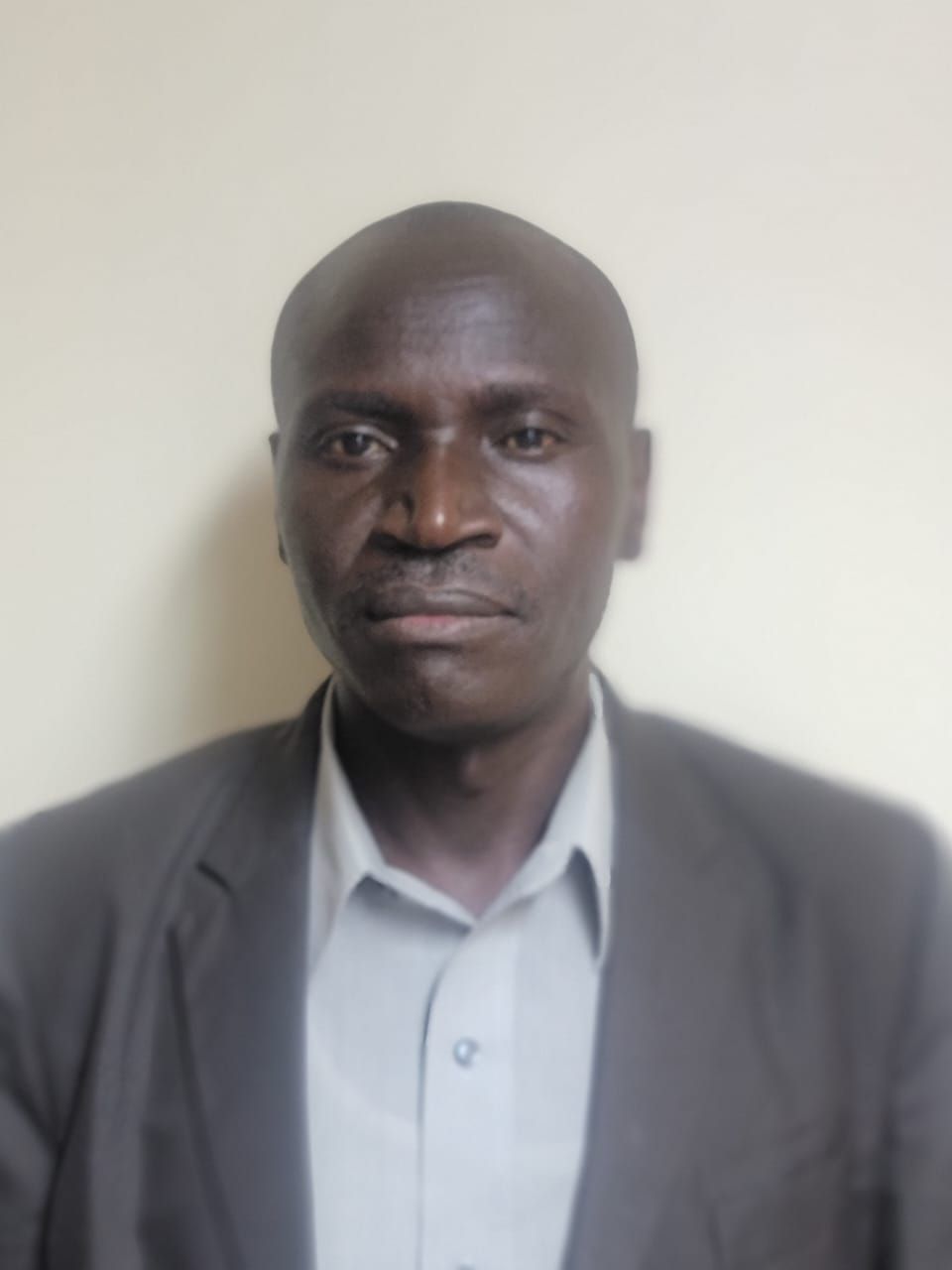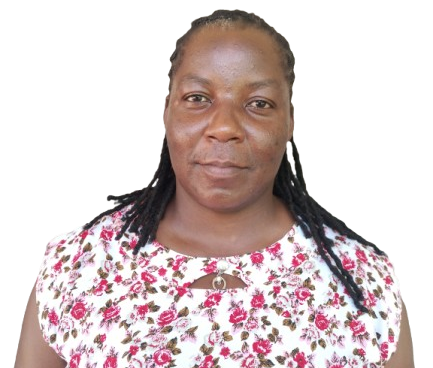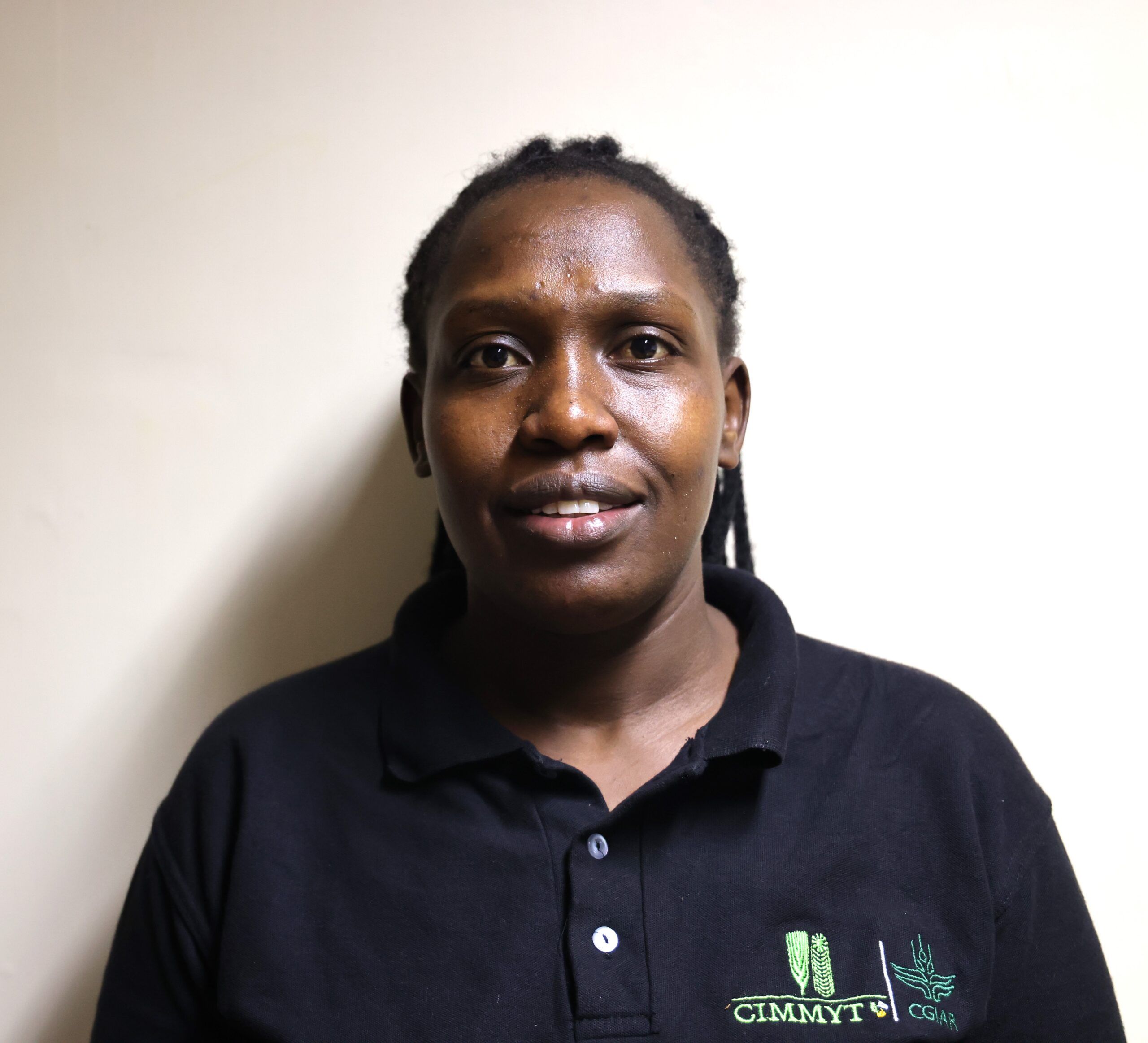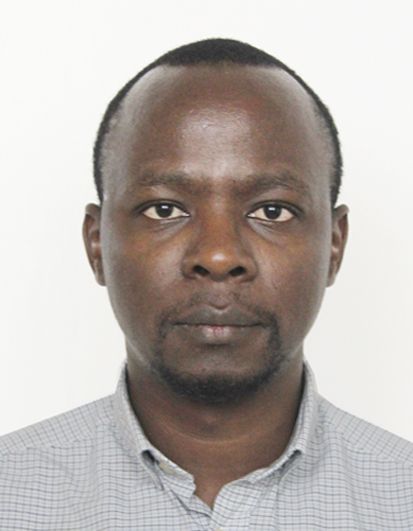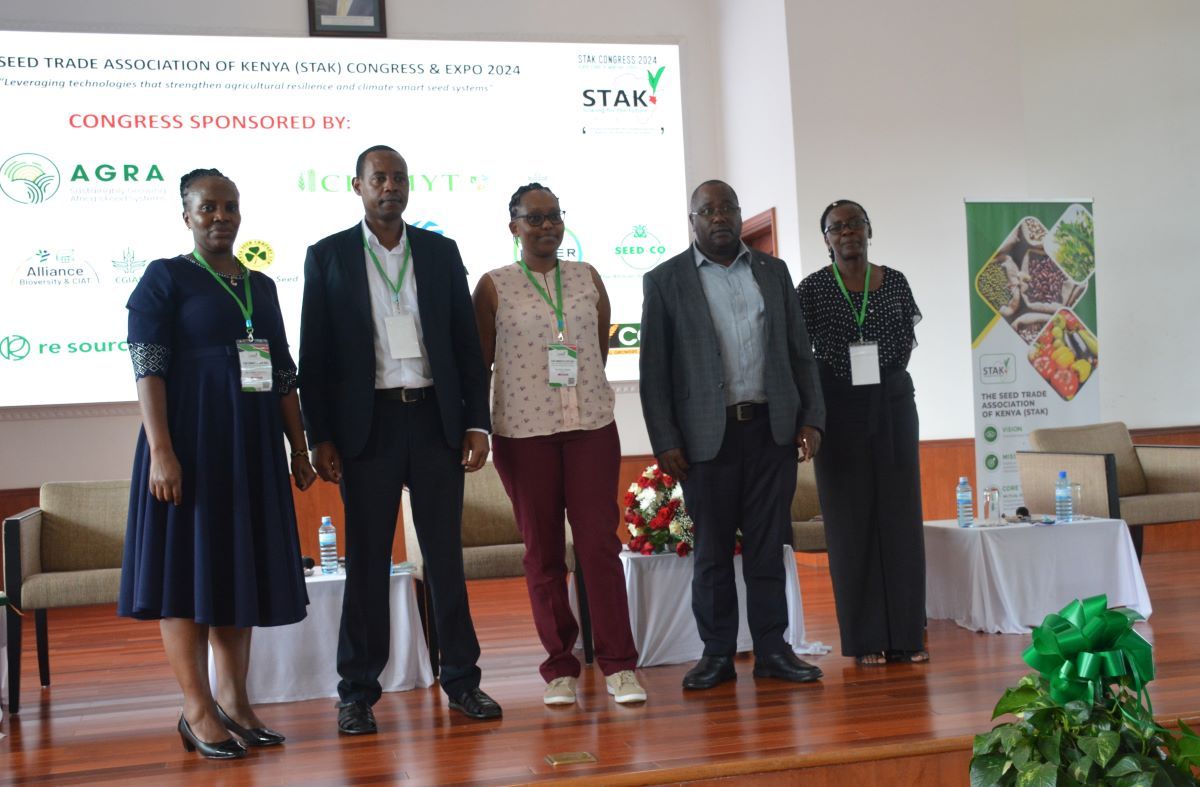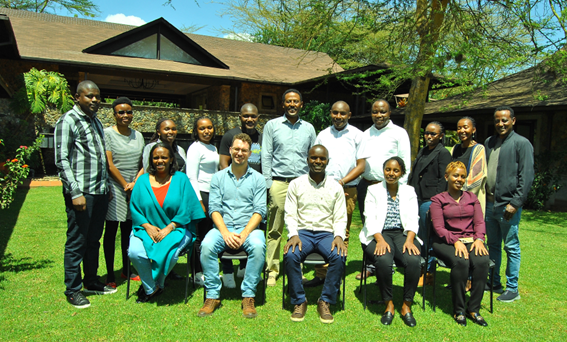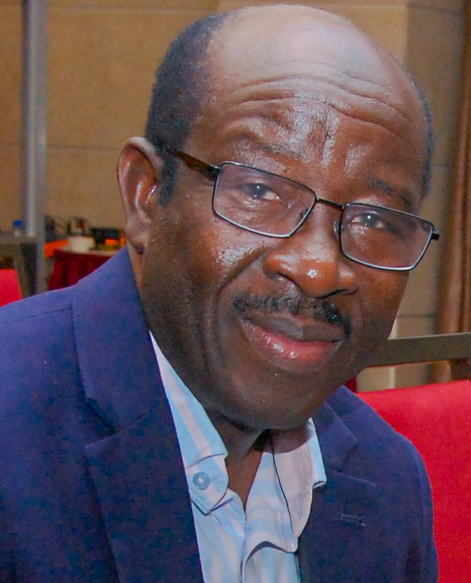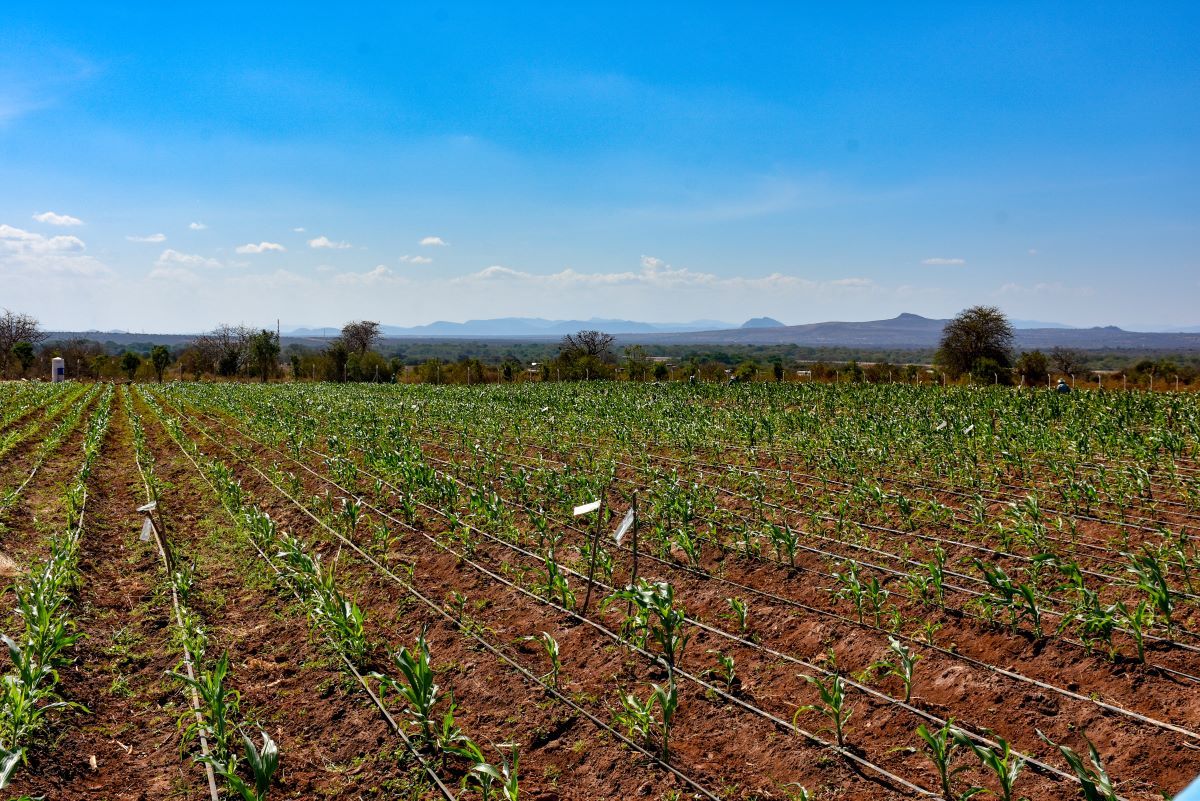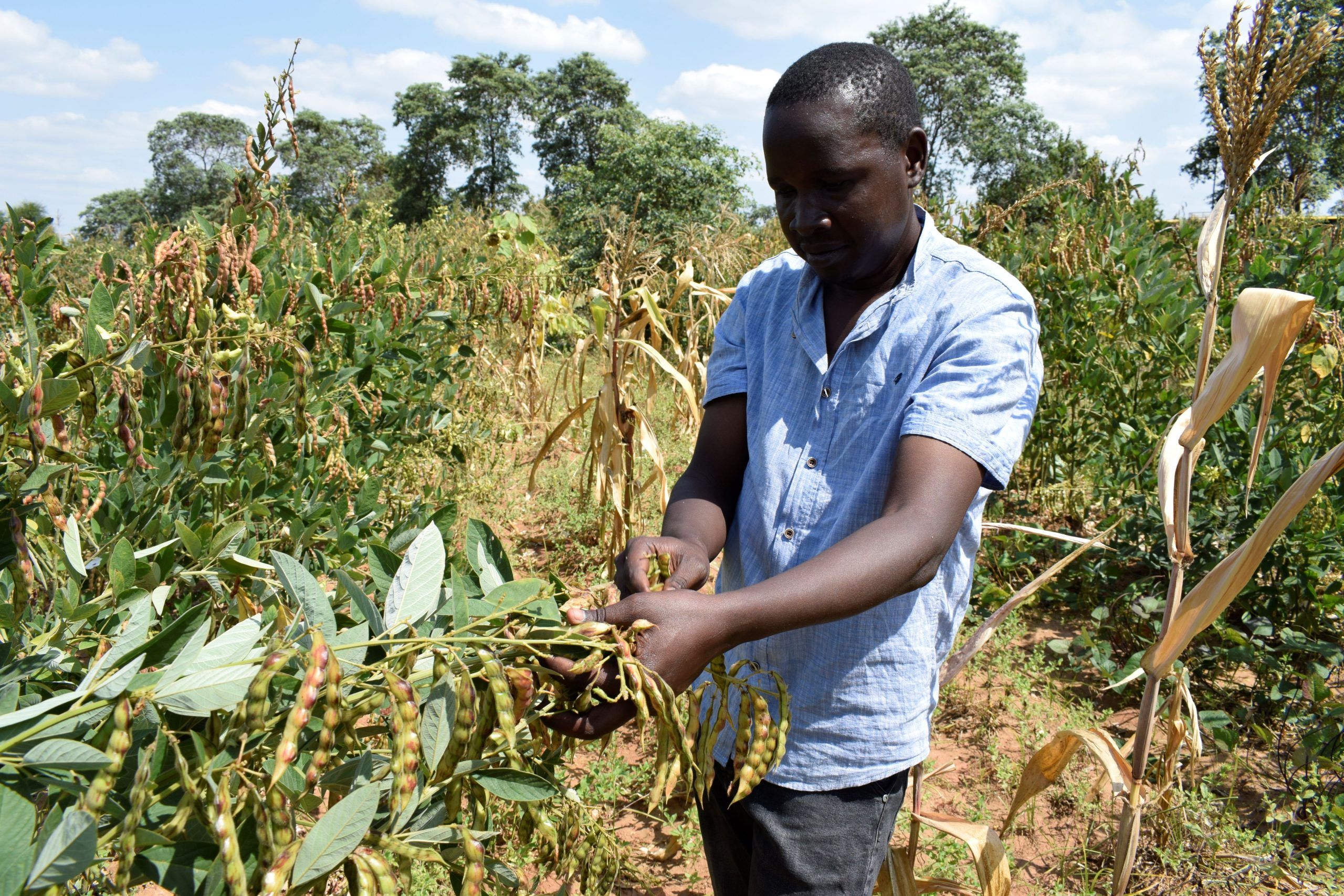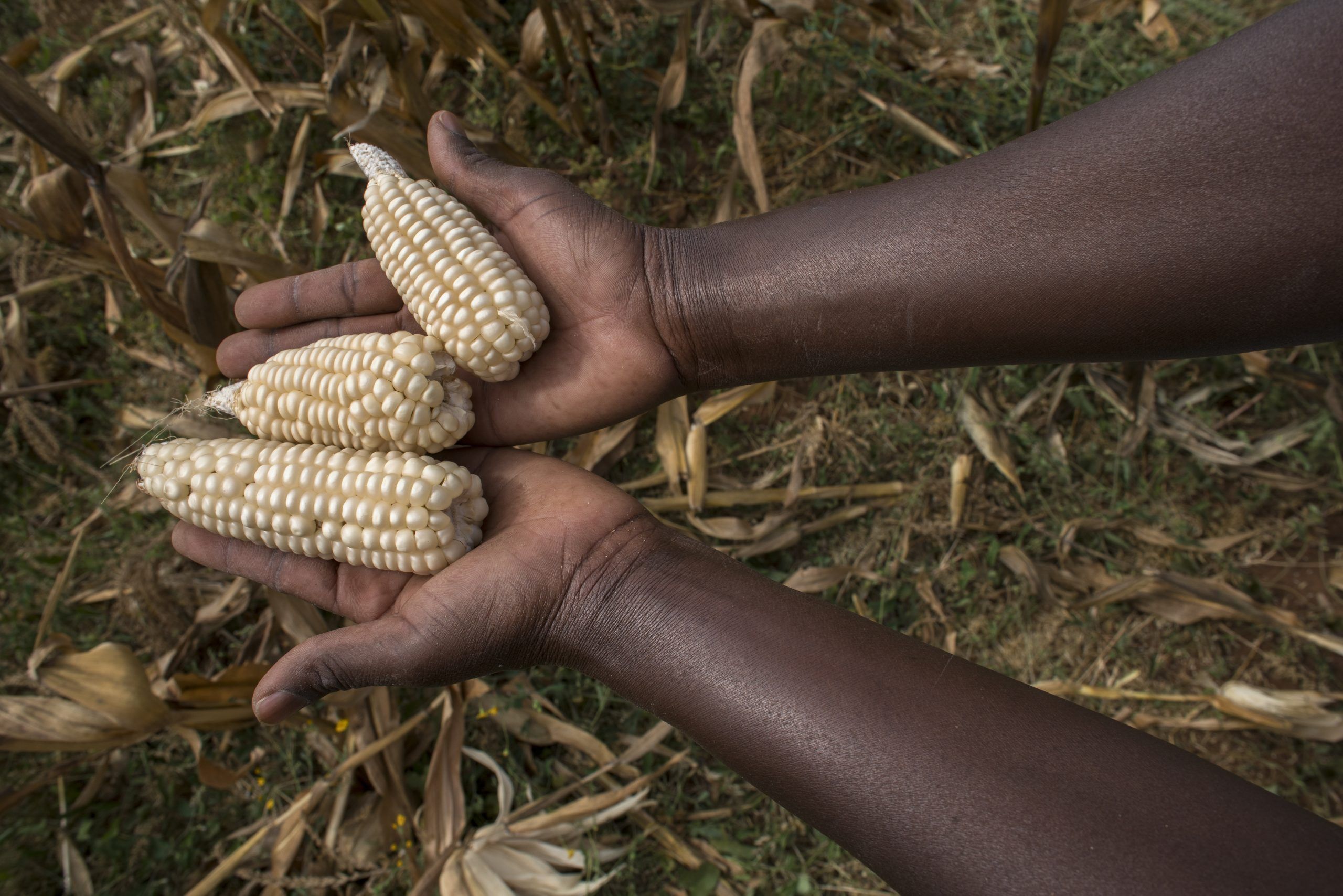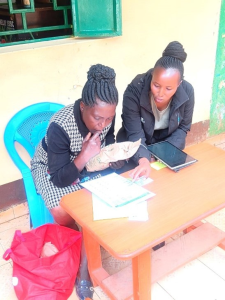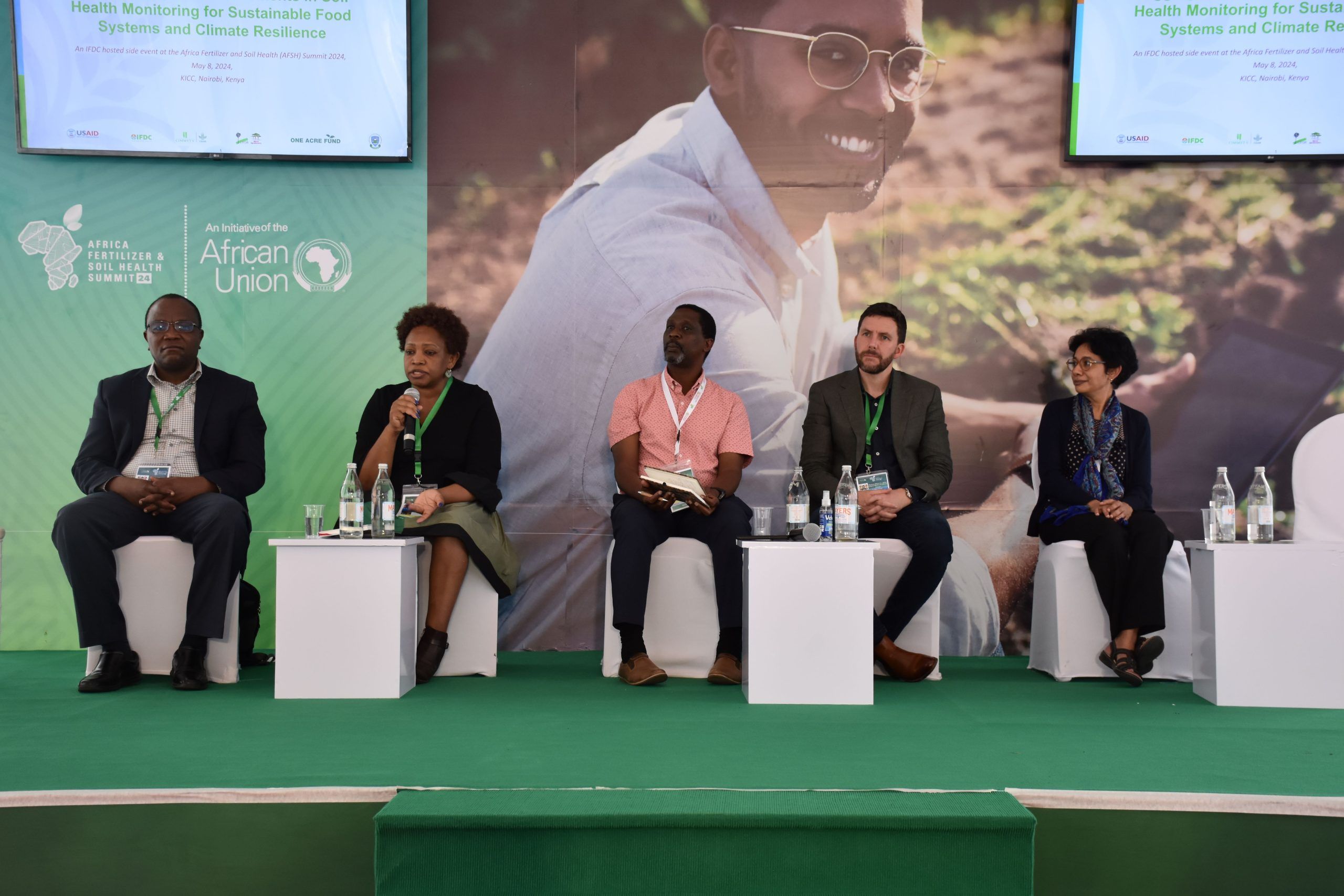Location: Kenya
For more information, contact CIMMYT’s Kenya office.
Noel Anyuka Templer
As a Seed Systems and Resilience Specialist, Noel applies systems thinking and social science insights to strengthen agricultural resilience in the face of climate change. His expertise lies in empowering smallholder seed systems in tropical regions to adapt and thrive amid evolving environmental and socioeconomic conditions, including in fragile and humanitarian contexts. His ongoing research interests include programming across the Humanitarian-Development-Peace (HDP) nexus and designing integrated approaches that enhance seed security, support sustainable livelihoods, and foster peace. Beyond agriculture, Noel catalyzes locally led climate action, conservation, and public policy by leveraging interdisciplinary approaches to drive sustainable impact. He is committed to translating research into real-world solutions, forging strategic partnerships, and innovating holistic interventions that improve seed security and community resilience.
Bridging the seed gap in Kenya with standard certified seed

Kenyan farmers continue to face significant challenges in accessing quality seed, particularly for dryland crops. To address this, Kenya introduced the Standard Certified Seed (SCS) class as a strategic initiative to bridge the gap between fully certified seed and informal farmer-saved seed, as semi-formal seed classes such as quality-declared seed are not legally recognized.
Officially launched in 2020, the SCS class offers a unique opportunity and has the potential to transform the seed sector for open-pollinated and vegetatively propagated crops, including indigenous vegetables, by ensuring quality while making seed production and certification more accessible and affordable. During a recent panel discussion, Lilian Gichuru, Seed Systems Specialist for Eastern and Southern Africa for the Dryland Crops Program at CIMMYT, highlighted its importance. She asked a critical question: “How can we leverage the opportunity presented by standard seed to ensure the delivery of quality seed to farmers, especially in underserved areas?”
This was the focus of a session on sustainable seed delivery systems at the Seed Trade Association of Kenya (STAK) Congress & Expo, held in Nairobi on November 6 and 7, 2024. Themed “Leveraging Technologies That Strengthen Agricultural Resilience and Climate-Smart Seed Systems,” the event served as a platform for knowledge-sharing, collaboration, and innovation. CIMMYT participated as one of the sponsors of the Congress.
To set the stage for the panel discussion, Ephraim Wachira, Deputy Director for Seed Certification at the Kenya Plant Health Inspectorate Service (KEPHIS), provided an overview of the SCS and highlighted Kenya’s efforts to implement its certification process. He described initiatives such as awareness meetings for seed merchants, training programs for outgrowers on certification processes, seed production and agronomic practices, and field inspections to ensure quality compliance. KEPHIS conducted field inspections, sampling, and laboratory testing to ensure quality compliance for 106 metric tons of seed—including sorghum, green gram, and cowpea—during a pilot phase, with a portion of the seed certified and labeled.
Despite these achievements, challenges persist. Limited farmer knowledge, dispersed farms, high production costs, and the impacts of climate change—such as the need for irrigation solutions—continue to pose obstacles. Slow adoption by mainstream seed companies and technical difficulties with online certification systems also hinder progress. However, opportunities lie in increased funding for climate-smart crops, government support for dryland agriculture, and growing farmer awareness. Wachira emphasized the importance of stakeholder engagement, saying, “Collaboration and stakeholder engagement are critical to ensuring farmers access high-quality seeds and advancing Kenya’s food security goals.”
The panel discussion provided valuable insights from Ephraim Wachira, Mutheu Ngila of Dryland Seeds, Thomas Kariuki, Head of Seed Production at Simlaw Seed, and Mulemia Maina, Managing Director of Agri Experience. Lilian Gichuru moderated the session and guided the conversation as the panel unpacked the concept of standard seed and evaluated its impact and progress.
Panelists emphasized that the standard certified seed class relaxes certain certification requirements, such as reducing the number of field inspections, lowering isolation distances, and adjusting allowable off-types. This adjustment is made without compromising essential quality standards, including disease tolerance limits, which are largely unaffected by the standard seed class protocols. The standard seed class remains a certified seed class.
“The concept of standard seed came from the realization that many farmers rely on farm-saved seed, which is often of unknown quality,” said Wachira. “Standard seed provides an option that improves seed quality while making production and certification of these important crops more practical and affordable.”
Despite its potential, the adoption of SCS faces significant challenges. One key issue is the high cost of production. “Production costs remain high, limiting the price advantage of standard seed. Seed companies often need to operate across multiple locations to meet certification standards, which drives up costs,” explained Mutheu Ngila of Dryland Seeds.
Another issue is low farmer awareness of the availability of certified standard seed for dryland crops—this lack of awareness has slowed adoption. “Farmers need to know that standard seed is a better option than farmer-saved seed in terms of quality,” said Gichuru. Without sufficient awareness, farmers continue to rely on informal systems, which are often less reliable and can introduce disease.
Logistics are another major challenge. Wachira noted, “Many standard growers register plots of less than one acre in scattered locations, making efficient inspections difficult. The small and dispersed production areas drive up costs and complicate the inspection process.” However, this challenge creates an opportunity for private inspection services to serve these remote plots.
The limited commitment of seed companies to this class of seeds remains an obstacle. Many companies have hesitated to invest in standard certified seed production due to concerns about profitability and the need for clearer differentiation in price and quality.
The panelists outlined several solutions to overcome these challenges and identified opportunities to scale standard certified seed.
One promising strategy is community-based production and certification. Mulemia Maina of Agri Experience emphasized the importance of localizing seed production. “Localizing seed production can save farmers significant costs. Transporting seed from distant regions is expensive, but if farmers can access seed locally, it becomes much more affordable.” In addition, localizing field inspections could lower costs and increase efficiency. “KEPHIS is ready to train more private community inspectors and district inspectors to manage this category of seed,” Wachira explained. This model could enable private companies to engage more farmers and improve the efficiency of certification.
Another opportunity is the growing emphasis on climate-resilient crops. Donors and government initiatives are increasingly prioritizing crops such as sorghum, millet, and pigeon pea that thrive in dryland conditions. These efforts align with the goal of scaling up the production of standard seed.
Raising awareness among farmers about the benefits of standard seed is critical to encouraging adoption. Thomas Kariuki, Head of Seed Production at Simlaw Seed, noted that creating more capacity-building programs for farmers would help them understand their role and expectations in seed multiplication. “We also need to engage consumers to understand the quality and value of standard seed to protect market potential,” he added.
To successfully scale up standard certified seed, all stakeholders—government, private sector, and donors—must work together to address challenges and leverage opportunities.
The private sector plays a critical role in driving adoption. Kariuki stressed the importance of incentivizing seed companies to engage in the production of standard seed. “Balancing affordability, accessibility, and quality is critical,” he said. “This is how we ensure farmers benefit while seed companies remain viable.”
Capacity building is essential to train seed companies, inspectors, and farmers on the production, certification, and benefits of this class of seed. In addition, regulatory adjustments should be made to facilitate the certification process. For example, the introduction of specialized inspectors for field inspections could eliminate the need for companies to use KEPHIS inspectors.
Developing markets for dryland crops is also vital to stimulate demand and encourage seed production. Finally, promoting collaboration among stakeholders will ensure the alignment of policies and resources.
Kenya is a world leader in standard seed certification, having developed robust protocols and standards that ensure quality without imposing prohibitive costs. Other countries are exploring similar models, but Kenya’s success could serve as a blueprint for others in Africa.

As Gichuru reflected, “Standard seed represents an opportunity to transform Kenya’s seed sector. But it will take collective effort, patience, and continued investment in awareness and capacity building to realize its full potential.”
Mutheu echoed this sentiment, emphasizing the importance of balancing quality, affordability, and accessibility: “Balancing affordability, accessibility, and quality is critical. This is how we ensure that farmers benefit while seed companies remain viable.”
As Wachira concluded, “Standard certified seed is about giving farmers a better option—one that is affordable, accessible, and of high quality. Let’s bring these benefits to the farmers who need them most.”
Exploration of options for functional seed systems and understanding of market needs for cereals and pulses in sub-Saharan Africa

The Seed Systems and Market Intelligence Team of the Sustainable Agrifood Systems (SAS) Program convened for a three-day retreat in Kenya. The retreat provided an opportunity to review ongoing research on seed systems and market intelligence conducted across CIMMYT projcts and CGIAR initiatives.
The event featured oral and poster presentations highlighting key findings from current research activities, fostering constructive feedback from colleagues. Discussion focused on strengthening the team’s technical capacity and ensuring its responsiveness to CIMMYT’s research programs and the broader CGIAR science agenda.
During the retreat, team members presented research spanning a wide range of topics. One key area focused on understanding the demands of farmers, processors, and consumers, for future crop traits, with the aim of informing breeding systems programs to maximize their impact.
The team highlight challenges faced by agro-processors, such as rancidity in pearl millet, which affects the shelf life of processed millet flour. Research also explored groundnut processing across different countries, revealing varied market demands.
In Malawi, groundnut markets prioritize grain size, color and uniformity-driven largely by export requirements-while oil content is less of a focus. In contrast, Nigerian markets demand high oil content for kuli kuli production and show a preference for early maturing varieties. Meanwhile, in Tanzania, an emerging peanut butter market has created opportunities for new groundnut varieties tailored to this product.
Seed systems research in Kenya highlighted how information and economic incentives for farmers and agro-dealers can serve as effective policy options to boost the adoption of new maize hybrids. These strategies have the potential to increase the market share of newly introduced hybrids in the maize seed sector.
The team showcased the impact of providing variety-specific, independently evaluated yield data for commercially available seed products under local conditions to guide farmers’ seed choices. Additionally, they explored the use of rebates as incentives for agro-dealers to stock new products and actively encourage farmers to try them. The role of price discounts and targeted information at the retail level for newly released varieties was also discussed as a way to promote adoption among farmers.
Another key area of research focused on how farmers perceive existing promotional materials distributed by seed companies. Feedback indicated that most leaflets and posters were not visually engaging. Farmers expressed a preference for materials that include visuals of plant stands, cob sizes, yield potential, and other critical details, presented in local languages like swahili.
Looking ahead, the team outlined a new four-year project supported by the Impact Assessment Group under the Genetic Innovations Action Area. This initiative will build on the current findings to generate further evidence on how information can accelerate farmer adoption of new seed products. It will also examine the role of agro-dealers as key information agents to disseminate knowledge effectively to farmers.
The meeting also highlighted the assessment of varietal turnover in Ethiopia and the role of the DNA Fingerprinting (DNA FP) approach in improving the accuracy of varietal identification. Accurate data generated through this method supports more robust studies on varietal adoption, turnover, and impact. It also enables the assessment of whether released varieties are being cultivated within their target agro-ecologies and contributes to understanding varietal diversity within production systems.
Discussions emphasized the relevance of the DNA FP approach for accurate data collection and its potential for broader application beyond Ethiopia, Tanzania, and Nigeria, where the IMAGE project is currently active. Expanding its use to other regions would further strengthen research efforts in seed systems and market intelligence.
Paswel Marenya, associate program director of SAS Africa, commended the team for the depth and breadth of their research and encouraged greater visibility of results within CIMMYT and beyond. As a key outcome of the meeting, the team committed to increasing its visibility in seed systems and market intelligence research while building a stronger, more qualified team to achieve this goal.
In terms of staffing, the team has a solid presence in Africa but aims to expand its reach through enhanced resource mobilization. Efforts are underway to strengthen the Seed Systems and Market Intelligence team’s presence in other regions where CIMMYT operates, including Latin America (LATAM) and South Asia.
Abou Togola
Abou holds a PhD degree in Entomology from the University of Lome (Togo Republic) in collaboration with Kobe University (Japan). He received his MSc in Entomology, and a Master’s degree in Project Management.
Abou has previously worked as a Host Plant Resistance Entomologist for Cowpea and Maize at the International Institute of Tropical Agriculture (IITA). In that role, he collaborated with the breeders to derive improved varieties with insect-pest resistance, and making these varieties accessible to the smallholder farmers across West Africa. His contributions extend to the identification of the Fall Armyworm in West Africa in 2016, and in developing and disseminating Integrated Pest Management (IPM) strategies against this invasive pest.
Before joining IITA, Abou held positions at the AfricaRice and the International Crop Research Institute for Semi-Arid Tropics (ICRISAT). His extensive professional background centers on researching integrated management options against insect-pests affecting tropical crops, including maize, cowpea, rice, sorghum, groundnut, pearl millet, cotton, fruit trees, and vegetables. Abou is passionate about implementing IPM, including host plant resistance, biological control, cultural practices, and other natural protective strategies. He also brings a wealth of experience to capacity building initiatives for NARES partners across Africa. Furthermore, he has successfully supervised numerous MSc and PhD students in Entomology.
Monica Fisher
Senior Scientist specializing in Gender Equity and Social Inclusion (GESI) at the International Maize and Wheat Improvement Center (CIMMYT). Based in Nairobi, she has over 20 years of experience in agricultural research-for-development across Africa, including Kenya, Malawi, Senegal, Ethiopia, Uganda, and Zambia.
Monica holds an MSc in Applied Economics from Oregon State University and a PhD in Applied Economics from Purdue University. Her career spans academic roles in the United States and applied research across multiple African countries. As a faculty member, she taught courses on environmental economics, international agricultural development, and quantitative methods. Her research concerns diverse topics such as technology adoption and impact assessment, women’s and minority entrepreneurship, digital inclusion, gender in science careers, climate change adaptation, and women’s empowerment in agriculture.
Training the next generation of plant breeders with VACS
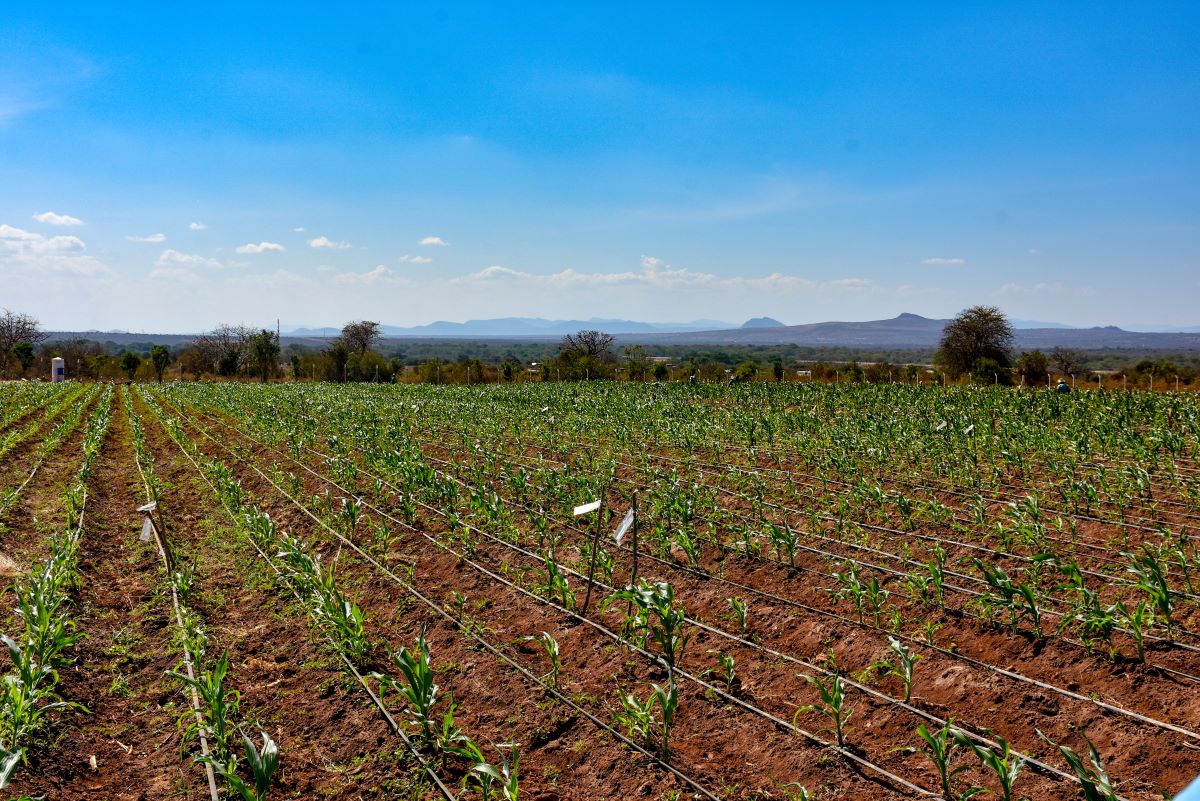
The foundation for a Vision for Adapted Crops and Soil (VACS) is capacity building: to boost adoption of opportunity crops, for nutritional security, diverse and climate-resilient cropping systems, to build healthy soils, a cohort of researchers and professionals is being supported to improve opportunity crops in Africa. Launched in October 2024 in Nairobi, Kenya, the VACS Capacity Project aims to train scholars and professionals in the latest plant breeding technologies. Professor Julia Sibiya, VACS Capacity Project Lead at CIMMYT, elaborates on how the project aims to contribute to the promotion, development and delivery of improved “crops that nourish” people, and the planet.
As part of the VACS Capacity Project, 30 Master and PhD students will be mentored by prominent experts in plant breeding. What support will they receive?
The students will be exposed to the latest technologies in plant breeding but will also learn from their mentors to deliver the VACS vision on opportunity crops and healthy soils.
The project also includes training of 40 mid-careers professionals. We want them to master the latest technologies and be able to apply them to develop improved opportunity crop varieties that will be used by farmers.
To achieve this goal, the VACS Capacity Project is supported by three hubs to facilitate the training by matching the scholars and professionals with appropriate mentors and institutes where they will be exposed to the latest research and technologies. The selected hubs are the International Institute of Tropical Agriculture (IITA-Nigeria), the West Africa Centre for Crop Improvement (WACCI) in Ghana, and the Biosciences eastern and central Africa-International Livestock Research Institute (BecA-ILRI) in Kenya. The hubs have “support entities” through Iowa State University and Cornell University.
For maximum and long-term impact, the CIMMYT Academy, with the support of the Sustainable Agrifood Systems program, is developing gender-aware mentoring and curriculum on a wide range of topics, to directly address priorities of the 70 scholars and professionals. Expertise is being sourced at institutions such as Iowa State University, CIMMYT and African universities for robust e-learning modules on the entire plant breeding pipeline and seed systems, with materials updated and designed for the African continent.
What gaps does the VACS Capacity Project aim to address?
Today, in Africa, very few plant breeders and scientists working on plant improvement are focusing on the opportunity crops identified by VACS, such as finger millet, bambara groundnut, and amaranth. Most breeders focus on the main staples. This is why we want to build a critical mass of scientists who work on opportunity crops that are vital for food security and nutrition under climate change.
Besides increasing the critical mass of researchers working on the opportunity crops, we also want to bring up-to-date the skills of professionals in the breeding sector, which is a sector where technologies are evolving very quickly. Most of the approaches to crop improvement used today differ greatly from approaches used ten years ago, hence the request by many professionals to upgrade their skills.
In addition to the long-term training fellowships for Master and PhD students, we will provide targeted skills training to professionals, with short-term placements between one and six months in institutions where they can learn cutting-edge techniques that they will apply to opportunity crops.
The project is also designed to build networks and communities of practice around these crops, so people can collaborate in breeding and scaling efforts that are requested by farmers and consider market intelligence for impact pathways. This is in addition to exchanging knowledge and germplasm.
How does this project differ from other plant breeding capacity building projects?
The difference is that we will place professionals into institutions where they will be provided with hands-on training. We will work with universities, international research institutes, and the private sector, including seed companies. This is like offering internships to mid-career professionals who want to upgrade their skills or learn new ones.
Our approach also includes mentorships for both scholars and professionals. Mentors will be recruited from all over the world to assist the fellows in various aspects of their research journey. Last but not least, we hope to see researchers working with farmers so they can learn from each other.
What are the expected outcomes of reaching a “critical mass of plant breeders”?
The objective is to have sufficient breeders to implement crop breeding programs designed for opportunity crops. We also want to encourage them to apply modern techniques to improve opportunity crops and, this way, to contribute to the development of more nutritious plants that are grown in healthy soils. As I mentioned earlier, besides empowering scientists themselves, we also aim to create the conditions for effective collaboration and partnerships for the successful delivery of improved opportunity crop varieties, and this delivery will be accelerated by reducing the breeding cycle. Overall, it will allow us to scale up efforts towards opportunity crops worldwide.
Machakos farmer reaps prosperity with new pigeon pea variety
In the heart of Ndeini village in Machakos County—a region in Kenya known for unpredictable weather and difficult farming conditions—farmer Festus Muthoka’s story is a testament to resilience and innovation. Festus transformed his livelihood by making strategic crop choices and adopting new pigeon pea varieties, resulting in higher yields and incomes.
“When I couldn’t find a job in Nairobi, I returned to the countryside and realized that the fields held more potential for me,” said Festus. For seven years, he had been growing maize, beans, and local pigeon pea, but inconsistent rainfall made it difficult to achieve the desired yields. Pigeon pea offered new hope, particularly when Festus discovered the new variety ‘Mituki.’
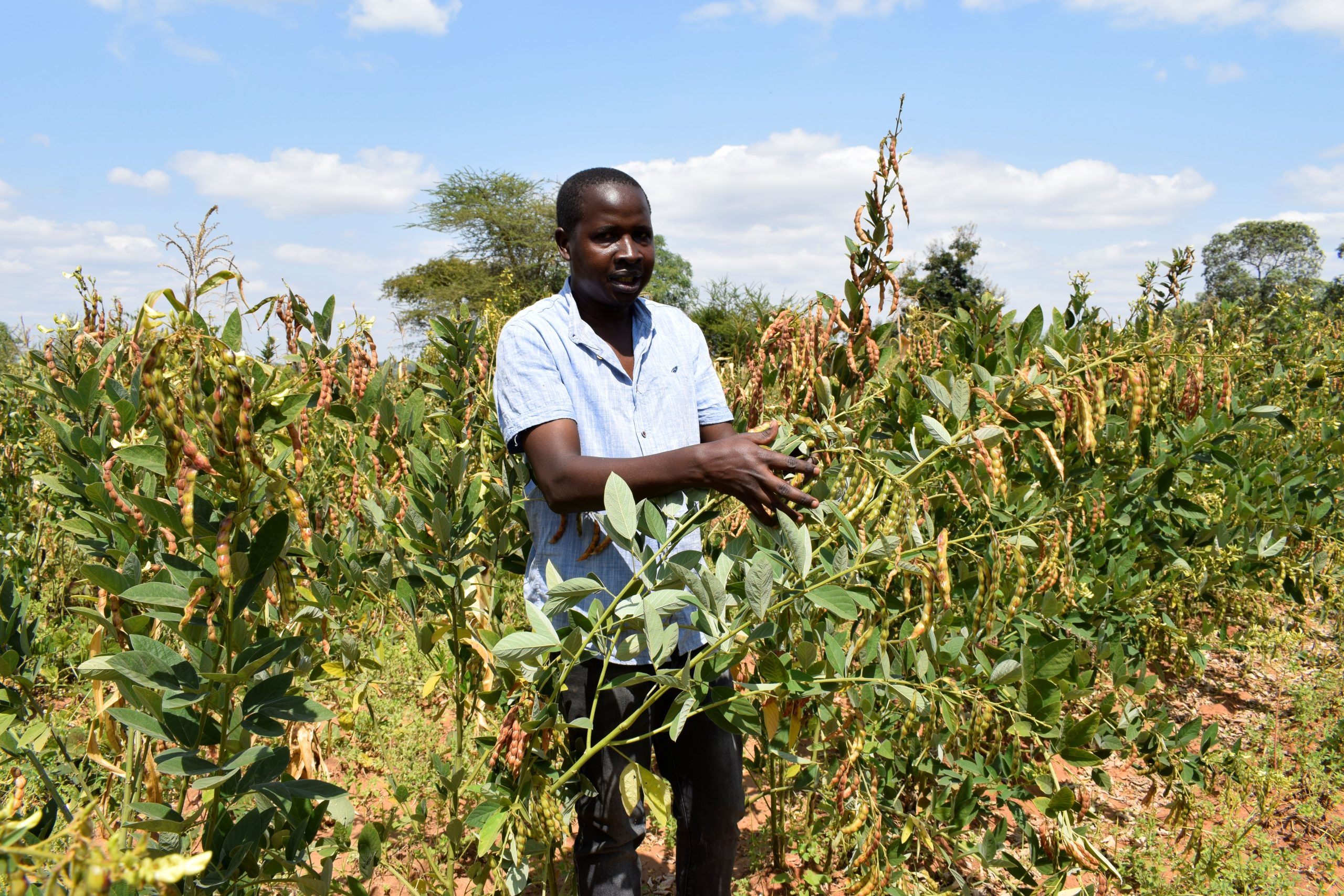
Mituki as a gamechanger
Unlike traditional pigeon pea, which takes up to nine months to mature, the Mituki variety matures in four and a half months and can be harvested two to three times a year. “The first year, I planted three lines of Mituki and saw its potential. It is more profitable to sell pigeon pea when it is green. This variety stays green for a long time, and the demand, especially in local hotels, is very high. I sold it for a good profit,” said Festus.
Now in his third year of cultivating Mituki, Festus has expanded his farm to 4-5 acres with plans to increase it to 10 acres in the next planting season. The financial gains have been substantial. “For my first harvest, I made over US $1,500 by selling green pigeon pea. Even after harvesting, the crop remains lush, allowing ongoing sales,” he said.
Festus’s story shows the importance of pigeon pea as an opportunity crop that meets the needs of farmers in challenging environments as well as in challenging economic times. Rael Karimi, a researcher and breeder at the Kenya Agricultural and Livestock Research Organization (KALRO) in Katumani, played a key role in developing the Mituki variety. “When I first started working on the pigeon pea breeding program, we identified a gap in the local varieties, which took a whole year to mature. The commercial short-duration variety, which matures in three months, had small pods and grain, therefore not acceptable to farmers. Farmers needed early- to medium-maturing varieties with market- and farmer-preferred traits, such as larger grains and pods for ease of shelling for green vegetables. This resulted in the development and release of the Mituki variety in 2018,” she said.
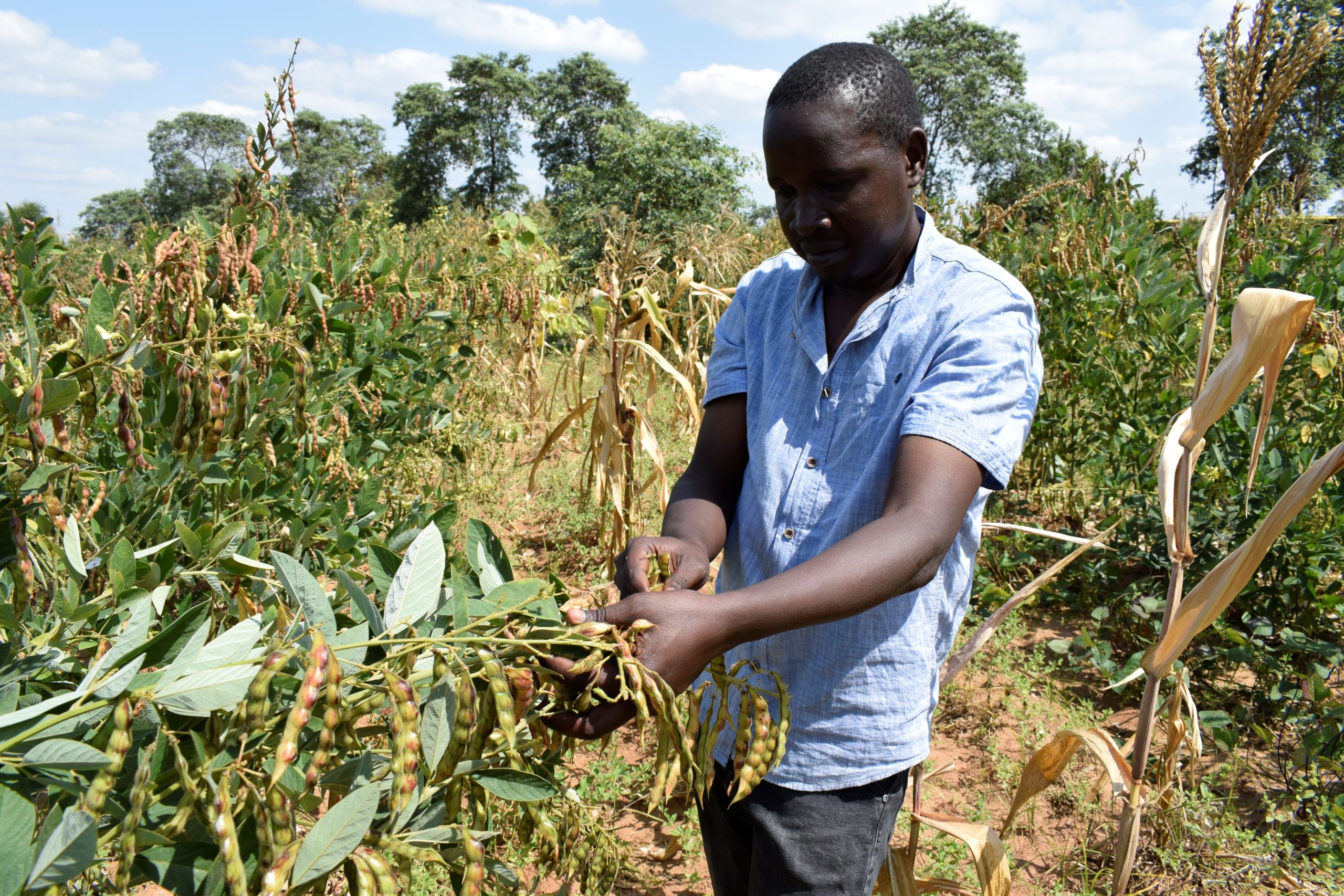
The development and promotion of new pigeon pea varieties involve extensive testing and active farmer participation. “We conducted on-station trials, followed by on-farm testing with farmers to ensure the varieties had the farmer-preferred traits. The Mituki variety is a medium-duration variety, giving two harvests per year, making it very popular among farmers,” Karimi added.
Creating awareness during field days
Promoting new varieties is equally important as developing them. “It’s one thing to release a variety but another to ensure promotion and popularization. If you release it and put it on the shelves, farmers will not be aware that a better variety is available,“ said Rael. This is where on-farm demonstrations and field days are crucial.
Field days are critical in ensuring that new, improved varieties reach the farmers who require them the most, bridging the gap between varietal development and practical application in the field. They also emphasize the importance of using high-quality seeds rather than recycled seeds, which often come with significant challenges.
A field day held in July in Ndeini village effectively raised awareness among numerous farmers about the benefits of the Mituki variety and how it can provide two harvests per year compared to their long-duration local varieties, which only give one harvest in a year.
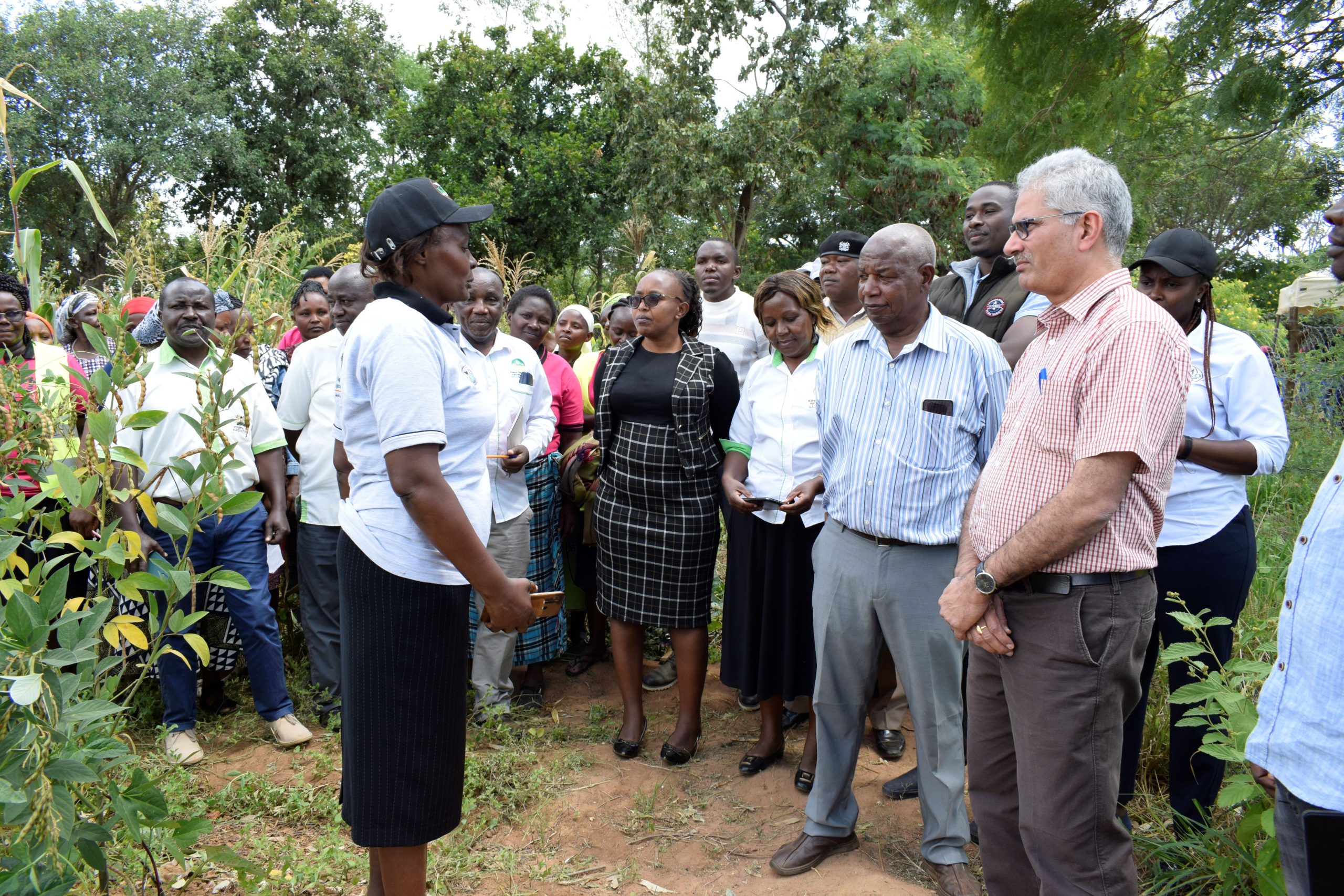
Seed purity for improved yields
Chris Ojiewo, seed systems lead for the Dryland Crops program at CIMMYT, emphasizes the importance of maintaining seed purity and good farming practices. “Farmers often recycle seeds for years, resulting in cross-pollination and loss of desirable traits. We encourage them to regularly buy new seeds, which ensures high yield and disease resistance. With support from CIMMYT and the Accelerated Varietal Improvement and Seed Systems in Africa (AVISA) Project, we are now able to produce and distribute quality seeds to farmers,” he said.
Chris highlighted the challenges of recycling seeds. Genetic impurity is a significant concern due to pigeon pea outcrossing. It prevents such grains from entering the formal value chain and, as a result, reduces farmer profits. Additionally, recycled seeds may accumulate diseases and pests, diminishing crop health. Stored seeds can also have low germination capacity and vigor, leading to poor crop performance.
To address these issues, Chris advocates for behavior change communications to educate farmers on the benefits of using pure seeds. Linking farmers to formal seed value chains ensures that they understand the financial incentives of using pure seeds. Moreover, improving the production, availability, affordability, and timely supply of quality seeds can prevent the need for recycling.
Collaborative efforts in pigeon pea breeding
Ganga Rao, a pigeon pea breeder with the Dryland Crops program, explains how CIMMYT provides support to both farmers and researchers. “CIMMYT has been instrumental in advancing pigeon pea breeding programs by providing technical support and resources. We collaborate closely with local researchers at KALRO to ensure that the new varieties are tailored to the specific needs and conditions of the farmers,” he said.
Through the collaborative efforts of the pigeon pea CGIAR-NARES network, CIMMYT, under the AVISA project, has supported KALRO in producing pigeon pea seed for the Mituki variety. The promotion of this seed used small seed packets of 200g. This approach created demand for the new variety, with many farmers purchasing the seed ahead of the short rains 2024 cropping season. This is an indication that farmers are willing to buy certified seeds when they are made aware of improved varieties that offer both farmer- and market-preferred traits.
Ganga emphasized the importance of continuous improvement and farmer engagement. “Our goal is to develop varieties that are high yielding and resilient to climate stresses and diseases. Through on-farm trials and demonstrations, farmers provide us with valuable feedback, which informs our breeding programs. This collaborative approach ensures that the varieties we release meet the market demands and preferences,” he added.
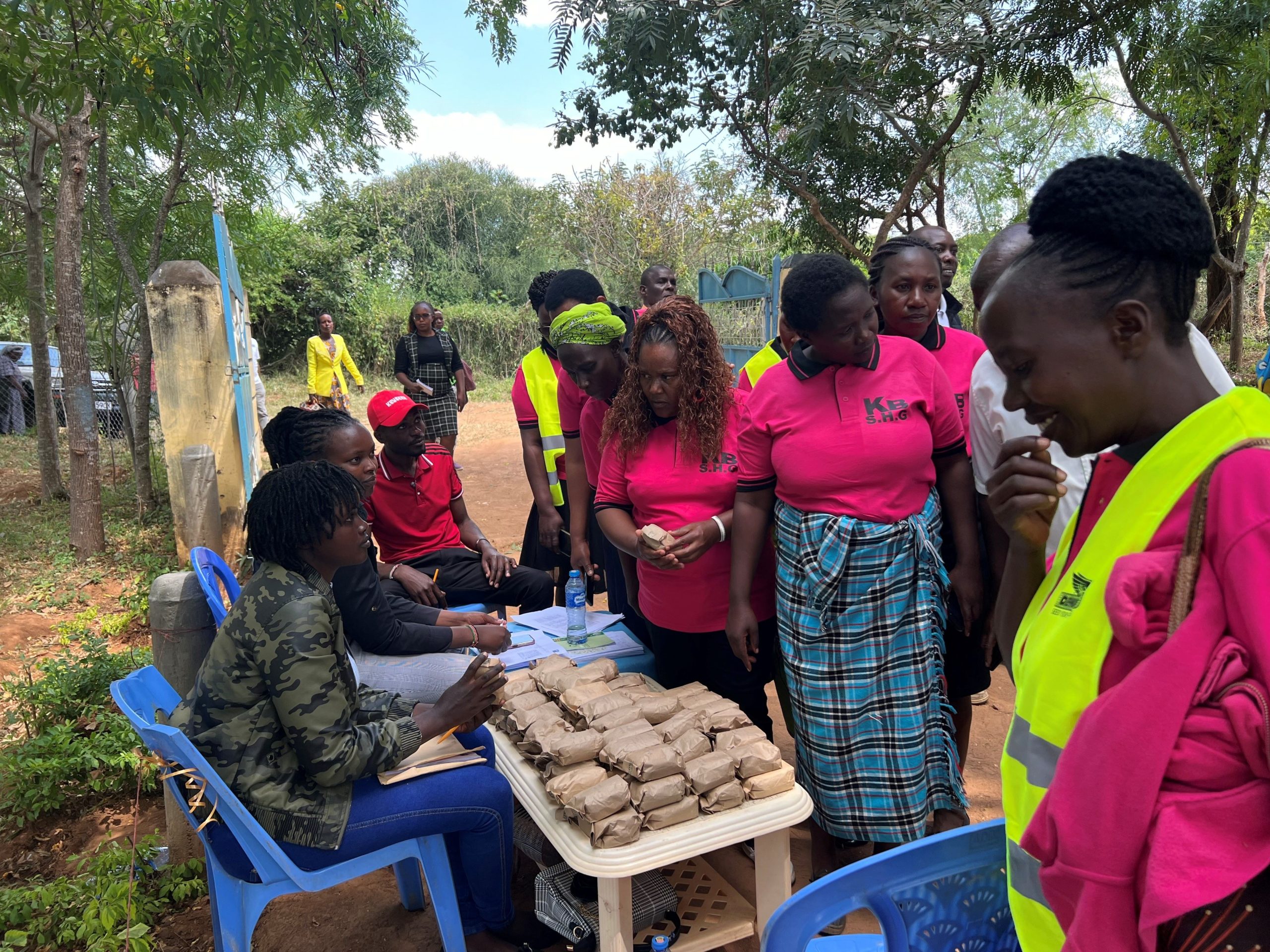
Ganga emphasized the importance of continuous improvement and farmer engagement. “Our goal is to develop varieties that are high yielding and resilient to climate stresses and diseases. Through on-farm trials and demonstrations, farmers provide us with valuable feedback which informs our breeding programs. This collaborative approach ensures that the varieties we release meet the market demands and preferences,” he added.
The future of pigeon pea is bright
Festus’s success with Mituki variety demonstrates the potential of strategic crop selection and good agricultural practices. “I now see pigeon pea as a major agro-enterprise for food security and as a significant source of income. The market demand for green pigeon pea is high, and with proper seed management farmers can sustain and improve their livelihoods,” Festus concluded.
Looking ahead, Karimi is optimistic that more farmers will adopt this new variety. “The future for pigeon pea is bright. We aim to have farmers producing throughout the year, meeting the high market demands and ensuring food security. By aggregating their produce, this will ensure adequate tradable volume which helps farmers negotiate for better prices and achieve greater financial stability,” she said.
Ganga added, “CIMMYT’s ongoing support in seed production and farmer training is crucial. We are committed to empowering farmers with the knowledge and resources they need to maximize their yields and improve their livelihoods. Pigeon pea has the potential to transform the agricultural landscape in dryland regions.”
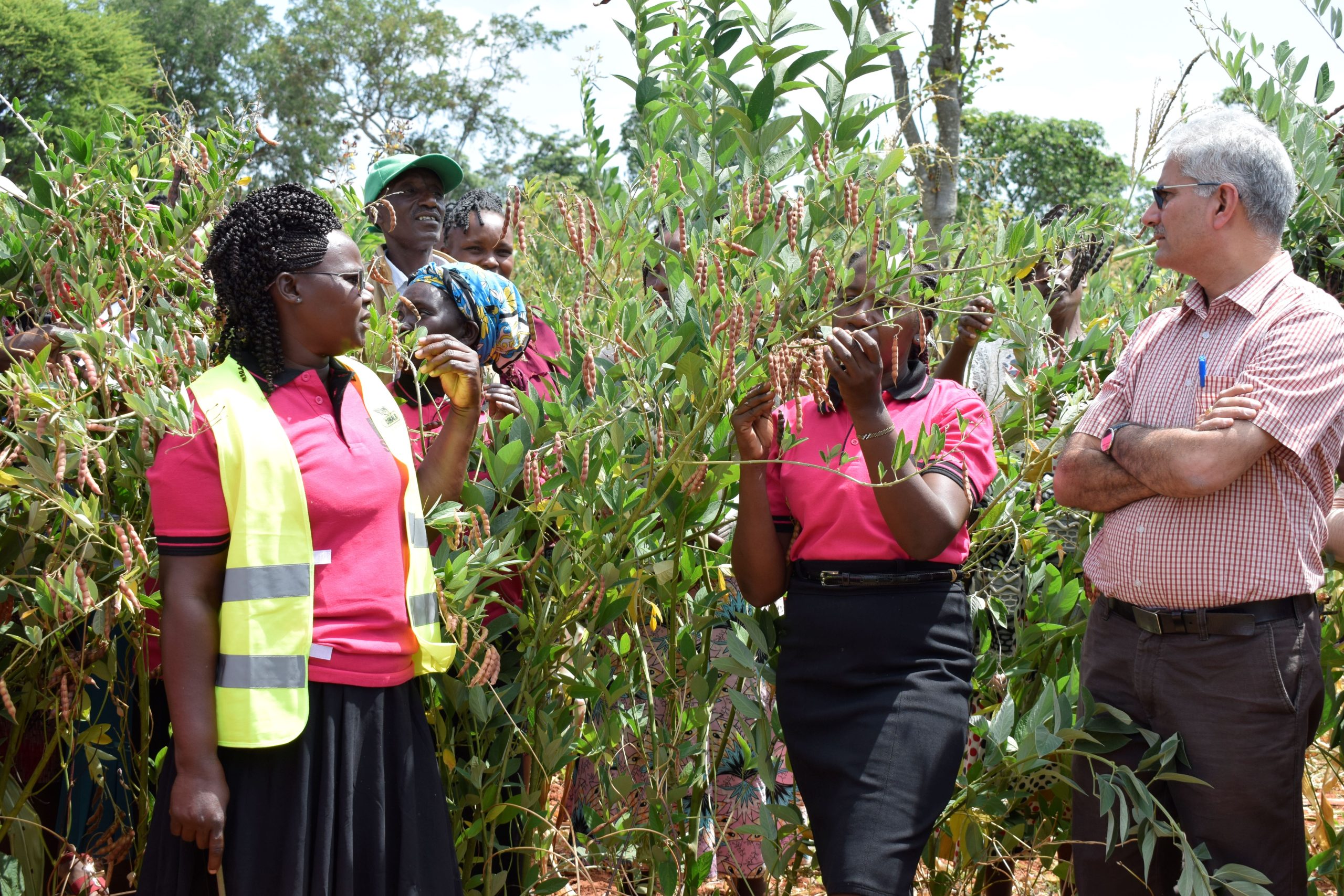
As Festus prepares to expand his farm and continue his journey, his story serves as an inspiration to many farmers in Ndeini and beyond. With support and innovations in crop breeding, farmers such as Festus are not only surviving but thriving, turning challenges into opportunities and paving the way for a prosperous future in agriculture.
Collins Makatiani Bulinda
Bulinda is a Value Chains Specialist with 8 years of experience leading Value Chains design and analysis, Livelihood, and Social Protection Programs in rural and humanitarian settings across the country. He interacts closely with policy processes and actively engages in generating knowledge that improves the delivery of development programs in the region.
Bulinda is currently a consulting research associate at CIMMYT. He has previously worked for other organizations and projects, providing technical support in strategy and project design, implementation, monitoring and evaluations, and humanitarian programming. He has specifically worked on projects for CHASP, ACTS, ICIPE, GROOTS Kenya, AfriDev Consulting, 3R-Netherlands’s project, ILRI, and Policy and Market Options.
He holds a Bachelor’s degree in Agribusiness Management and an MSc degree in Agribusiness Management at The Centre of Excellence in Sustainable Agriculture and Agribusiness Management (CESAAM) from Egerton University.
Potential for independent performance information to shape farmers’ seed choice for hybrid maize: Insights from Kenya
Maize production in Kenya is a critical component of the country’s agriculture and food security. However, climate change poses a serious threat to its production. Changes in temperature and precipitation patterns can affect maize growth, reduce yields, and increase the incidence of pests and diseases.
Prolonged droughts and unpredictable rainfall can lead to crop failures, while extreme weather events can damage crops and infrastructure. As the climate continues to change, it is essential for Kenyan farmers to adopt resilient agricultural practices and more adapted seed products to safeguard maize production and ensure food security for the population.
For decades, seed companies as well as governments and donors have invested in maize hybrid breeding. Dozens of new hybrids have been made available to seed companies throughout East Africa for multiplication and distribution. These hybrids are designed and tested to outperform older hybrids in terms of yield under rainfed conditions, to include tolerance to drought and pests.
However, the potential impact of these investments has been hampered by the slow turnover of hybrids among farmers. Research has shown that, despite the availability of newer, higher-performing varieties, farmers tend to purchase older, less productive hybrids. The ‘turnover problem’ in Kenya has been described by CIMMYT researchers in a recent publication.[1]
One of the constraints responsible for the low turnover of varieties is a lack of information among farmers on the performance of the newer products. Despite advancements in the development of new seeds and the retail infrastructure to reach farmers, neither the public nor the private sector is generating and disseminating information on the performance of different maize seed products across various agroecologies. Farmers therefore have choice overload but lack objective information on relative seed performance required to make informed seed choices across seasons and growing conditions.
CIMMYT conducted a field experiment to shed light on the potential influence of seed-product performance information on farmers’ seed choices. The study involved aggregating and packaging farmer reported yield data for some seed products and presenting this to randomly selected farmers at the point of sale to assess whether the new information would influence their choice of products. The study was conducted in Kirinyaga and Embu counties where, like many parts of Kenya, farmers have access to a diverse range of maize seed products from seed companies which promise benefits like higher yields and improved resilience but lack objective information on their performance which could support their choices, including when to switch and to what.
[1] https://journals.sagepub.com/doi/full/10.1177/0030727019900520
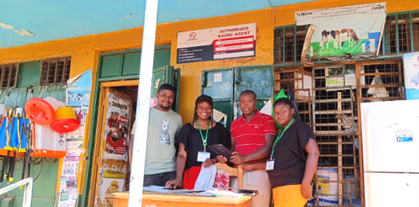
The experiment
The study was conducted in March 2024, at the onset of the long rain season. The research team collaborated with 36 local agro-dealers in five towns and surveyed over one thousand farmers. Farmers were intercepted as they approached the agro-dealer outlets and briefed about the study. Upon consent, they were informed on the benefits of trying something new (experimenting with varieties) and were offered a voucher for one free bag of maize seed to encourage them to try a seed product new to them. They then were randomly assigned to two experimental groups: treatment and comparison. Participants in the treatment group were shown a chart containing product-specific yield data on maize hybrids grown in their counties (see the chart below). The chart contained farmer-reported yields from the previous year’s long rain season aggregated at two levels: county average yield and the average yield of the top 25% of farmers who realized the highest yields. The latter demonstrated the actual potential of a seed product. They were asked that, if they wished, they could choose the voucher product for experimentation from the list but they were not required to. Participants in the comparison group were offered placebo information that would not affect their seed choice: they were given some fun facts about Kenya and agriculture in Kenya. We assess the effect of the information on the choice of the bag of seed they were buying with the voucher to experiment with.

Before they made any purchases, the customers were asked about which maize seed they intended to buy. After purchase, they were interviewed again to find out which maize seeds they bought and how they had used the voucher.
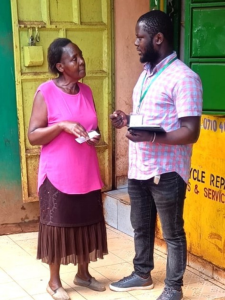
What we found
Majority of the treatment farmers had a very positive evaluation of the information they received, indicating that they found it relevant and useful when making seed choice. Specifically, over 90% of them said that the information was trustworthy and easy to understand while about 80% said that the information was easy to recall. Over 80% of them disagreed that the list of varieties was too long to comprehend, the information on varieties was similar and hard to differentiate and that it was hard for them to choose a variety from the list.
This positive evaluation of the information is also reflected in their seed choices. Pre-purchases (before they entered the agrodealer store), farmers who were exposed to the performance information showed increased certainty in their choices and a higher inclination towards products listed in the product performance data, particularly the top-performing varieties. While 5% of the comparison farmers indicated that they did not know what to buy with their vouchers, only 2% of the treatment farmers suffered the same uncertainty. Such farmers relied mostly on agro-dealers to recommend a product they could experiment with.
As shown by the bar chat below, only 7% of comparison group farmers desired to use their vouchers on (or had an effective demand for) products which were the top two in the product performance lists. This increased to 27% among the information group farmers, representing an increase of 286% in the demand of top performing products.

However, although our intervention relaxed an essential constraint (product performance information) and increased the demand for some seed products, the actual purchases were subject to other constraints, stock-outs key among them. As a result, both groups showed shifts from initially desired products in their actual purchases. Even so, the treatment group maintained a stronger alignment with the listed products, exhibiting a higher likelihood of purchasing top-performing products. Only 5% of farmers in comparison group used their vouchers to purchase products which were top two in the product performance lists. This increased to 13% among farmers in the treatment group, representing a 160% increase in the likelihood of purchasing the best performing products in the lists.
Reflections
Slow varietal turnover among maize farmers in E. Africa is a pervasive problem and there is no one solution to it. This research shows that information on product performance can be an effective approach in bringing to the attention of farmers newer, more adapted and better yielding seed products. Dissemination of such information can be incorporated in extension programs, shared at the point of sale, shared through SMSs and WhatsApp messages, displayed in posters fixed in public places, etc.
The findings offer clear recommendations for future investments in seed systems development. These include the implementation of new product testing regimes to ensure quality and objectivity of performance data, testing what other information would be useful to farmers – beyond yield data, exploring new marketing options to reach farmers more effectively, and considering additional approaches to empower farmers with the knowledge they need to make informed decisions thus leading to improved agricultural productivity, resilience, and livelihoods.
Digital solutions advance soil health for sustainable food systems and climate resilience

Farmers interact with soils daily, supporting the entire food system. Empowering them with tools for research and scalable learning initiatives is crucial.
Speaking as a panelist at the 2024 Africa Fertilizer and Soil Health (AFSH) summit, Paswel Marenya, CIMMYT senior scientist, emphasized the need to enhance farmers’ capacities to effectively utilize digital tools.
“Digital tools do not inherently lead to impactful changes unless they enhance farmers’ capabilities in managing soil health,” said Marenya. “The potential of a digital tool should enable farmers to shorten the cycle from receiving information to applying new techniques.”

Simple, easy to use tools
One promising solution is the development of user-friendly platforms that synthesize essential information from cutting-edge research into practical tools.
“In partnership with IFDC, CIMMYT is currently collaborating to develop an interface that synthesizes essential information into a user-friendly digital platform. This interface would be complemented by tools that allow for on-site testing,” said Marenya.
“CIMMYT aims to design digital tools that not only improve access to information but enhance the farmers’ ability to learn, innovate, and adapt. This approach promises real progress beyond more recommendations,” said Marenya.
This sentiment was echoed by Leigh Winowiecki, soil and land health global research lead at CIFOR-ICRAF, who discussed advancements in soil health monitoring and highlighted the Land Degradation Surveillance Framework (LDSF) which collects data on various indicators of soil health.

Addressing the forum as the keynote speaker for the side event titled, “Digging deeper: Advancement in soil health monitoring for sustainable food systems and climate resilience,” Winowiecki showcased the global implementation and impact of the framework, noting its implementation in 40 countries.
“This framework is a field-based method that collects data on various indicators of soil health, land degradation, and vegetation diversity across landscapes,” Winowiecki said.
The findings from the framework guide practical interventions to mitigate soil erosion and influence policy.
Annie Wakanyi, director of partnerships & business development at One Acre Fund, highlighted how they prioritize farmers by providing high-quality inputs on credit, ensuring they are distributed near their farm fields, and offering training on usage, as well as assisting farmers in accessing markets for the surplus they produce.

The private sector’s role was addressed by Jonathan Atkinson, Farm Service Unit Africa, who introduced the “cost to serve model” to understand the dynamics between costs and return on investments for farmers. He emphasized the need for practical, scalable approaches for soil health interventions that cater for commercial activities.

Professor Nalivata of Lilongwe University of Agriculture and Natural Resources emphasized the importance of addressing soil erosion to achieve soil health in Africa using Malawi as a case study. He discussed policy implementation on fertilizer, promoting climate-smart agricultural practices and research as strategies implemented to address soil degradation in Malawi, calling for more initiatives like incentives for farmers and building human capacity.
“This can be achieved if we maintain a collaborative approach involving government, academia, the private sector, and donor communities to transform soil health and improve livelihoods,” said Nalivata.

Latha Nagarajan, in her presentation on the IFDC’s USAID-funded soils initiative, highlighted how the initiative improves livelihoods through innovative soil management. She explained the ‘space to place’ approach, which integrates spatial remote sensing data with place-specific soil health data to enhance soil management decisions, increasing efficiency, resilience, and sustainability.

